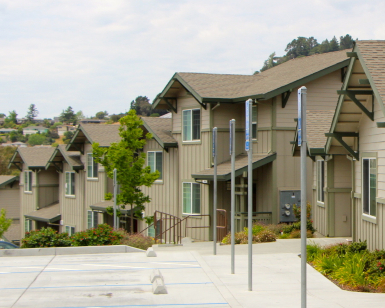San Rafael, CA – A master list of all potential locations in unincorporated Marin County that are under consideration as future housing sites will be the subject of online-only meetings on Marin 1 and March 15.
The Board of Supervisors and Planning Commission, which are co-hosting the meetings, will then select sites to be evaluated in an upcoming Housing Element environmental review. During the March meetings, members of the two governing bodies could direct County staff to narrow down the list by eliminating some eligible locations.
 County staff has been hosting community meetings throughout the unincorporated county to share information on future housing candidate sites and to gather feedback, which will be shared with the Board and Planning Commission.
County staff has been hosting community meetings throughout the unincorporated county to share information on future housing candidate sites and to gather feedback, which will be shared with the Board and Planning Commission. Both joint sessions of the Board and Planning Commission will be held as 5 p.m. videoconferences only because of the topic’s high interest in unincorporated neighborhoods and the need to prevent large crowds from congregating because of the COVID-19 virus. The Civic Center’s Board chamber will be closed.
That session will be a follow-up to December 7 and February 1 joint meetings between the two bodies at which staff from the Marin County Community Development Agency (CDA) presented details about the Housing and Safety Elements, which are required plans to accommodate future housing needs and address climate change. Staff has been hosting community meetings throughout the unincorporated county to share information on candidate sites and gather feedback, which will be shared with the Board and Planning Commission.
“Residents in the local workforce struggle to find suitable affordable housing close to their Marin jobs, which leads to longer commutes, negatively affects the environment, and erodes quality of life,” said CDA Deputy Director Leelee Thomas. “We see this as a chance to make marked progress with racial and social equity. At this stage, we are asking our residents to participate in this process and help us identify places where we can add housing within our communities.”
The County has been directed to plan for at least 3,569 new housing units in unincorporated areas during the eight-year cycle that begins in 2023. Those must be distributed among all income categories, from extremely low to above moderate. Parcels have been identified as potential housing sites in all areas of the unincorporated county. Land owned by schools, houses of worship, businesses, nonprofits, private owners and the county government is all open for consideration. While housing is allowed in almost all local zoning districts, including commercial, the update to the Housing Element will increase the maximum number of homes allowed in some areas.
The consequences of noncompliance with housing requirements could be stiff. If a jurisdiction does not meet its housing goals, it becomes ineligible for state funding to serve local transportation needs and may be subject to statewide streamlining rules, which allow for housing development with limited public review process. California Department of Housing and Community Development (HCD) has a new division that is designed to enforce accountability with plans to meet housing needs.
“It behooves us to listen, collaborate, and come with our own locally designed plan rather than risking state reprimand and losing local control on decisions,” Thomas said.
The Housing Element, along with the accompanying Safety Element, needs to be completed by the end of 2022 so it can be submitted to the State of California for approval. This winter, CDA staff is engaging in community discussions, speaking at local homeowners association meetings and design review boards. Three online tools are being used to encourage residents to provide feedback on where housing could be located.
- Balancing Act allows residents to select sites on a virtual map and watch the allocation numbers change as allotments are distributed from location to location.
- Atlas allows users to see the potential housing sites and how they relate to information such as population density, environmental constraints, and equity data.
- The site suggestion map allows the public to suggest a site that is not already on the candidate list. It also displays all candidate sites for public comment.
“Our outreach has received positive feedback, and several thousand people have visited the Balancing Act website,” said CDA Senior Planner Jillian Nameth Zeiger. “The meetings with design review boards and other community organizations have allowed us to describe the process, answer questions, and gather a lot of public comment that will be reported back to the Board of Supervisors and Planning Commission. We have more sites on the candidate list than we need for the plan, so we are looking to the public for guidance on where they think we should be planning for more housing. Balancing Act, public comment at meetings, phone calls, and emails are great ways to get involved.”
Questions and comments can be emailed to staff and phone inquiries can be made to (415) 473-6269. Regular updates can be found on the Housing and Safety Elements update webpage.
For disability accommodations, please phone (415) 473-6358 (voice), CA Relay 711, or email the Community Development staff at least five business days in advance of the event. The County will do its best to fulfill requests received with less than five business days’ notice. Copies of documents are available in alternative formats, upon request.